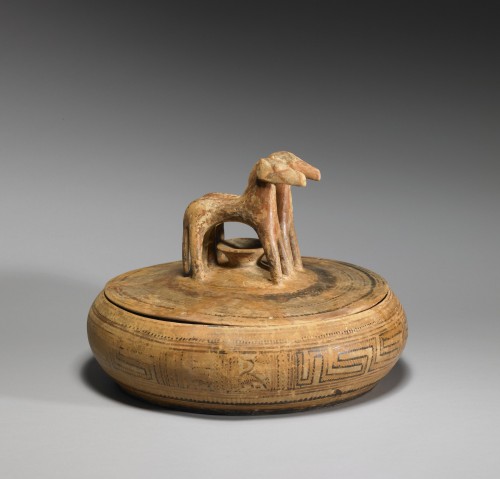ancientart:Greek pottery from the dynamic Geometric period.With the mention of ‘ancient G
ancientart:Greek pottery from the dynamic Geometric period.With the mention of ‘ancient Greece,’ many would probably immediately think of the flourishing age of Greece during the Classical period. The roots of this incredibly well-known period of ancient history lie in the Geometric period of Greece, ca. 900-700 BC. This was a time of dramatic transformations, which led to the establishment of primary Greek institutions. The pottery of this period, the ‘Geometric Style,’ is characterized by the use of basic geometric shapes. These include rectangles, triangles, and squares, and are brought together in the form of symmetrical or asymmetrical patterns.Here I have provided two examples of this pottery from the Walters.Pyxis and Lid with Two Standing Horses, 8th century BC:The horse pyxis was made only in Athens. Many examples have been found in the graves of women and are thought to have held food offerings or personal items of the deceased. The horses on the lid, which served as a handle, may reflect the prominent status of the owner’s family, as horses were associated with the aristocracy during this period.Pointed “Pyxis,” 9th century BC:This “pyxis” (small container) lacks its cover, which rested on the flat rim. Two holes indicate that both elements were suspended together on a cord. The simple decoration represents early Geometric decoration at its purest, without figural or animal additions.Courtesy of & currently located at the Walters Art Museum, Baltimore, USA. Via their online collections: 48.2029 & 48.2024. -- source link
Tumblr Blog : ancientart.tumblr.com
#greek#pottery

